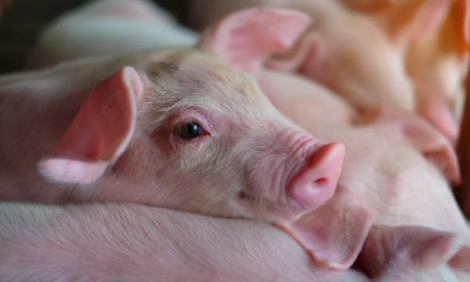



Taiwan Pork Industry Overview, August 2004
By USDA Foreign Agricultural Service - This article provides the pork industry data from the USDA FAS Livestock and Products Annual 2004 report for Taiwan. A link to the full report is also provided. The full report include all the tabular data which we have omitted from this article.Report Highlights
The discovery of BSE in the U.S. in December 2003 continues to dramatically affect the
Taiwan beef market. Beef consumption in 2004 is expected to fall by 17 percent to 63,200
mt (86,000 mt CWE), reversing steady increases since 2001. At the same time, the ongoing
outbreak of Porcine Circovirus (PCV) continues to depress local swine production, keeping
local pork prices high and stimulating pork meat imports, which will reach 78,000 tons (CWE)
in 2004. Imports of other meat products such as offals are expected to increase.
The ongoing outbreak of Porcine Circovirus (PCV) continues to depress local swine
production, keeping local pork prices high. This will likely stimulate pork meat imports
although more than 95 percent of consumption is supplied locally. In the long term, Taiwan’s
relatively efficient swine industry will only contract slowly, continuing to produce pork for the
local market while imports enter for processing or during period of high prices.
The demand for imported pork variety meats, which adds to the reduced local supply since
the 1997 foot-and-mouth disease outbreak, is expected to remain strong for the foreseeable
future. As Taiwan's current leading supplier of pork and pork offal, U.S. suppliers should
benefit most from WTO market opening measures. Sanitary concerns are likely to keep key
competitors, such as South Korea and Mainland China, off the market for several years.
Production
In 2004, swine production (fat pigs slaughtered) is estimated to grow less than one percent
to 9.5 million head. This is down 6 percent from the post-FMD outbreak peak of 10.1 million
head in 2001 but above Council of Agriculture (COA) “target” production of 9.3 million. The
most recent pig inventory survey conducted in May 2004 was not available because of a
typhoon that disrupted data collection.
Despite ongoing attempts to increase herd size in
response to high prices, production continues to be limited by a persistent outbreak of
Porcine Circovirus Infection (PCV), which has high mortality in pigs weighing between 15 to
30 kg. When and if Taiwan gets PCV under control, high prices are expected to result in a
larger number of breeding and standing pigs.
Post forecasts a total 2005 slaughter of 9.5 million. Production will not rise from 2004
despite high local pork prices because of disease, high feed prices, the imminent
liberalization of competing imports and the continuing closure of the once-lucrative Japan
export market. Farmers may also be reluctant to expand production too quickly in order to
keep prices high. To prevent an oversupply of pork, Council of Agriculture has been
continuously urging farmers not to expand production too quickly.
Long-Term Trends
In the long term, the largely efficient Taiwan swine industry will continue to produce pork for the local market, with imports mainly used for processing or to supplement occasional shortfalls. Pork production will likely eventually stabilize because of Taiwan’s relatively cost-competitive structure, with current production costs estimated at 1.2 to 1.7 times North American and European levels. Although pessimists feared that total herd size would quickly fall to 6.0 million, it seems more likely to stabilize at 6.5 million in the next 3-4 years. The decline of Taiwan’s swine sector is expected to continue because several factors:
Realization that export markets lost because of Taiwan’s 1997 Foot and Mouth Disease (FMD) outbreak will not recover fully in the near term.
Continuing high feed prices, which have increased interest in importing feedstock from new origins (such as corn from the PRC).
Increasing post-WTO accession import competition, especially from imported offals, which will be liberalized in 2005.
Rising environmental pressures (especially waste disposal) that will increase costs of production. Note: Although Taiwan’s Environmental Protection Administration relaxed Taiwan’s pig wastewater standards at the request of COA, the long-term trend is still toward stricter regulation.
Retirements of elderly farmers.
Increasing pressure to divert land to more valuable uses.
The most serious problem facing Taiwan’s swine industry is the loss of export channels
resulting from the 1997 FMD outbreak. Before 1997, Taiwan was a net exporter of prime
pork meat to Japan while the remaining offal was consumed domestically. The FMD outbreak
caused massive losses from suddenly closed export markets and the costs of depopulating
30 percent of the swine population (3.8 million head). The number of swine farms fell by
almost half from 25,300 in 1997 to 13,000 in 2002, with smaller farms failing the most
often.
Despite this contraction, 43 percent of total farms still have less than 100 head while
25 percent have less than 20. The large number of small farms and aging farmers point to
continuing consolidation in the swine sector. Most swine production is concentrated in the
southwest part of Taiwan in Pingtung, Yunlin, Changhua and Tainan Counties.
Although Taiwan has been FMD-free since 2001 and was declared FMD-free in 2003 with
vaccination by the Office International des Epizooties (OIE), exports are not likely to recover
to pre-1997 levels. At the earliest Taiwan might be able to export pork to Japan in 2006 if it
can avoid another FMD outbreak. Progress will be especially slow since Japan will only
accept imports from countries that are FMD-free without vaccination, which can only come
after a region has been FMD free for a year without vaccination.
Even if Taiwan does resume
exports, it is very unlikely that trade will return to pre-1997 levels because of the disruption
in marketing channels and a loss of positive consumer awareness in Japan. The most
optimistic estimate is that Taiwan will export 80-100,000 mt by 2007 -- which is down
sharply from 270,000 mt in 1996. In addition, hard-won access to foreign markets will
remain tenuous because of possible FMD or other disease introductions caused by
contraband imports of Chinese swine.
Pig farms have also suffered because of price competition. Post-WTO offal imports have cut
offal prices by as much as half, forcing pork meat exporters to raise their prices, further
reducing their competitiveness. This has created a growing realization that exports will not
return to pre-FMD levels, which is causing farmers to stop swine production. Farmers are
also aging rapidly, which will also likely reduce the number of farms, especially smaller
facilities. After consolidation, production costs should be even lower than at present, leaving
the remaining farms more competitive. This contraction in domestic production and the
ongoing consolidation of small farms will likely result in increased long-term import demand
for pork meat and offal.
Prices
Pig prices are expected to remain high through 2004 because limited production of some
minor substitution for beef (BSE) and poultry (bird flu) in the face of limited domestic
supplies. Pig auction prices rose to a yearly high of NT$6,000/100 kg (US$179/100 kg) in
July 2004. Although high prices and an eventual reduction in PCV may boost herd sizes in
2005, any production increase will likely be very limited.
In 2003 (the latest available data), the break-even point for hog production was slightly
more than NT$4,720/100 kg live weight, the highest level in years. The direct cost of hog
production was NT$3,898/100 kg in 1999, NT$3,676/100 kg in 2000, NT$3,800/100 kg in
2001 and NT$4,000/100 kg in 2002. (Source: Animal Technology Institute, Taiwan) High
feed and piglet prices resulting from PCV were responsible for the high costs. Taiwan
farmers tend to keep the pigs longer (about 6.5 months) on farm than their U.S.
counterparts. The average weight for slaughter pigs has remained at 110 kg/head for years.
Profits per head were equivalent to NT$1,010 (US$29.9), which is well above the NT$358
(US$11.0) per head in 2002.
To view the full report, please click here (PDF)
Source: USDA Foreign Agricultural Service - August 2004








